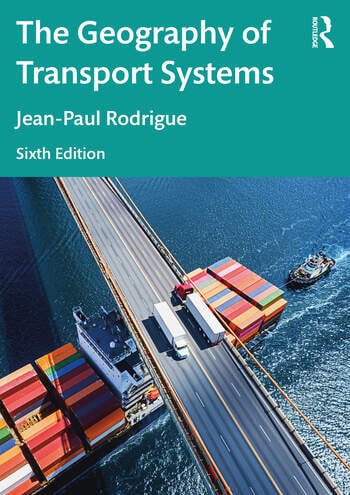 The Geography of Transport Systems | The spatial organization of transportation and mobility
The Geography of Transport Systems | The spatial organization of transportation and mobility By Maersk/SeaLand
On April 26th, 1956, the Ideal-X left the Port of Newark, New Jersey, to the Port Houston, Texas, which was called five days later. It carried 58 35-feet (8 feet wide by 8 feet high) containers, along with a regular load of 15,000 tons of bulk petroleum. The containers were loaded in less than eight hours. The 35 feet unit represented the standard truck size in the United States at that time, particularly because there were very few highways, and turn radius on standard roads did not allow for long trailers.
This first containership was converted T2 oil tanker under the initiative of Malcolm McLean (1914-2001), a trucking magnate who saw the tremendous potential of containerization, particularly in terms of loading and unloading costs. In 1937, while delivering cotton bales from North Carolina (Lafayette) to New York Harbor, McLean was forced to wait several days while longshoremen manually loaded the cargo. The time and cost intensiveness of standard break bulk cargo operations was an important impediment to trade and shipping. McLean calculated that in 1956 loading a medium-sized ship the conventional way was costing $5.83 a ton. Comparatively, loading containers (using the Ideal-X as a frame of reference) would cost less than $0.16 a ton. The economic advantages of such a mode of transportation became clear to the shipping industry…
READ FULL ARTICLE HERE… (transportgeography.org)
Home | Caravan to Midnight (zutalk.com)






